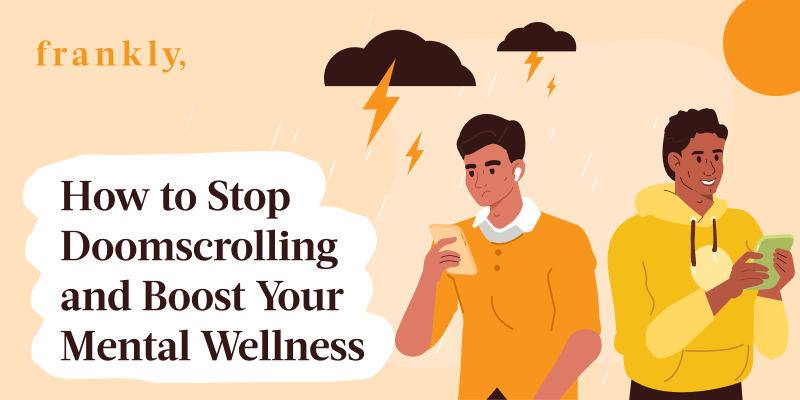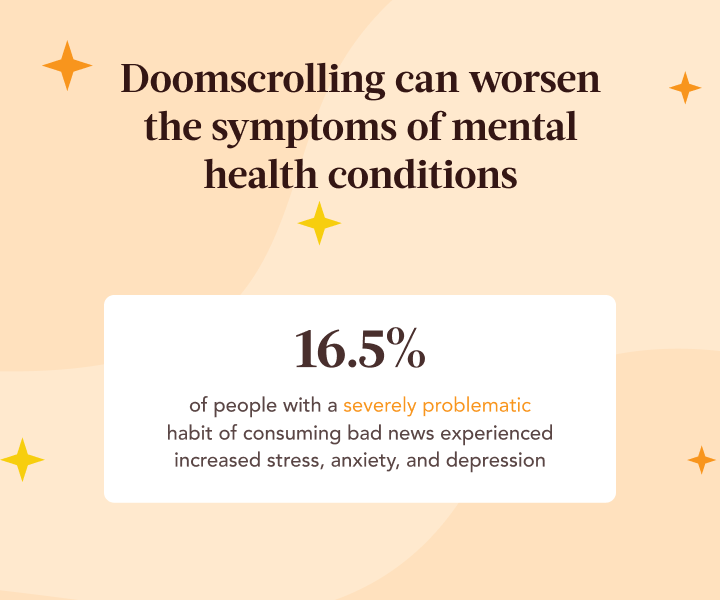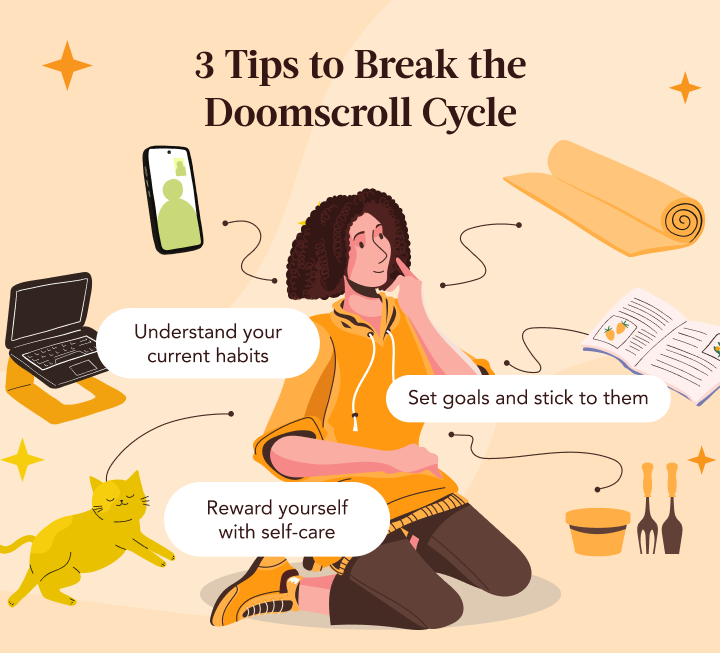How to Stop Doomscrolling and Boost Your Mental Wellness

You know it’s time for bed, but you’re still on your phone scrolling through troubling news stories. If this sounds familiar, you’re not alone. Many people get so engrossed in negative news coverage that it has an impact on their mood. In this article, we’ll take a deeper look at how your scrolling habits could be affecting your mental wellness.
Doomscrolling is the act of binging on news or social media content about troubling subjects, including tragedies, crises, or disasters. While your intention might be to stay informed, there’s a middle ground between being informed and consuming enough bad news to negatively impact your wellness.
Problematic news consumption, more commonly known as doomscrolling, can make the symptoms of mental health conditions worse, and may have harmful effects on your physical health. One study found increased stress, anxiety and depression in the 16.5% of respondents who had a severely problematic habit of consuming bad news.

Before the COVID-19 pandemic, 60% of adults got their news through their mobile phones. The physical isolation of the pandemic led many to spend more time scrolling on social media, and refreshing the news endlessly for updates and to stay connected with friends and loved ones. Self-reported depression symptoms quickly rose to 49% in adults, well above historic norms.
The impacts of doomscrolling can vary from feelings of hopelessness to frequent mood changes, worsened symptoms of existing mental health conditions, and increased insecurities and stress. Some people report spiking heart rate, increased blood pressure and chronic pain.
Here are three tips to help you change your habits:
1. Understand your current habits
Take stock of your sources of social media and news sites. You can change the tone of your overall information intake by choosing sources that are aligned with your wellness goals. Examine how many hours a day you spend on news and social media sites and find ways to cut back and prioritize healthy consumption habits.
2. Set goals and stick to them
Once you’ve set a goal, giving yourself boundaries will help keep you accountable. Using a timer to manage your time spent scrolling is a simple way to decrease doomscrolling habits. If you know certain news sites or social media accounts have a harmful impact on your mental wellness, commit to avoiding them or spending limited time looking at them.

3. Reward yourself with self-care
One way to break old habits is to build new ones. Going for a walk, participating in hobbies you enjoy, or reading a book that’s been on your list for months are easy ways to replace doomscrolling in your free time. If you tend to doomscroll before bed, change your evening routine to swap your phone for calming music, journaling, or meditation to put your mind at ease and prepare yourself for healthy sleep.
Having support to help you change your habits and improve mental wellness can make a difference. Between the 24-hour news cycle and limitless access to news coverage via smartphones and social media, it’s easy to become overwhelmed. A Frankly Care Guide can work with you to develop a plan and teach you the skills necessary to manage doomscrolling habits. Our Care Guides spend time getting to know you, and help you set unique goals to support your mental wellness journey. Get started today.
Medically reviewed by Chelley Balke, PMC-MSN, NP-C
Written by Frankly Staff
Last updated 1/3/2023

Comments ()